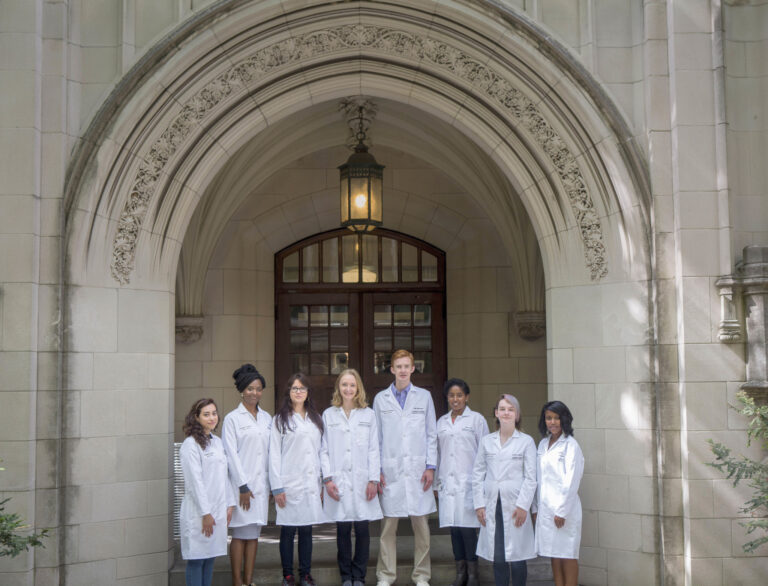By J. Morgan ’91
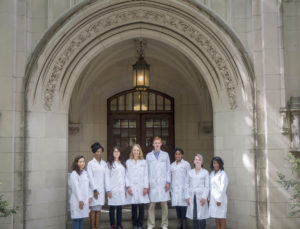
Many liberal arts colleges face the challenge of providing science majors with the research and clinical experiences that will allow them to evaluate careers in science and medicine. For many years, Berea College has met this need by offering the Summer Undergraduate Research Experience (SURE) to its most advanced students. Because the existing science facility, the Hall Science Building, has aging and limited lab spaces, the College has partnered with institutions across the country to place students in internship positions at other institutions. Some of the most successful placements have come through the help of alumni who are leaders in their fields — such as Dr. Rocky Tuan ’72 at the University of Pittsburgh and Dr. Dennis Roop ’69 at the University of Colorado — who recognized that Berea students needed research opportunities in order to compete for positions in the top medical schools and graduate research programs. Notably, Dr. Harold “Hal” Moses ’58 has been inviting biology and chemistry students to work in his lab and other labs at the Vanderbilt-Ingram Cancer Center (VICC) since 2001.
In the 15 years since Moses first welcomed Berea’s students into his laboratory, nearly 60 have been given the chance to spend 10 weeks in an immersive research program on Vanderbilt University’s campus. As a result, a significant pipeline between the College and Vanderbilt’s graduate programs has emerged. Eight Berea alumni have gone on to do graduate work at Vanderbilt, three of those earning Ph.D.s. In addition, Kaitlyn Reasoner ’16, who participated in the internship program during the summers of 2013 and 2015, started medical school at Vanderbilt this summer. Other Berea alumni who took part in the SURE experience at Vanderbilt have gone on to complete advanced degrees at schools such as the University of Virginia, Johns Hopkins University, and Boston University.
The original partnership between the College and Moses’s lab has grown and deepened over the years. By 2006, Berea’s students were able to intern in areas outside of the Moses lab through the Aspirnaut™ program, founded and run by Dr. Billy Hudson, director of the Center for Matrix Biology, and Dr. Julie K. Hudson, vice president Ifor medical center relations at Vanderbilt. Hudson developed the program to meet the needs of rural students who might not otherwise be exposed to careers in STEM (science, technology, engineering, and math) fields. Students in elementary through middle school participate through demonstration labs that are delivered by video conferencing, while high school and undergraduate students have the opportunity to intern in laboratories on Vanderbilt’s campus during the summer. Participation in the Aspirnaut™ program has created benefits beyond those normally associated with SURE programs. Not only have Bereans gone to Vanderbilt to study, but some of the high school students participating in Hudson’s program are now attending Berea.
In 2011, the relationship was formalized as the Hal Moses Summer Research Internship Program. Students selected for the program now receive a housing subsidy and a stipend, and qualified students are also eligible for early-decision admission to Vanderbilt’s graduate programs. The fall of 2015 saw another milestone achieved. According to Dr. Ron Rosen, professor of biology at Berea, “We had the first Vanderbilt weekend where faculty, graduates, and medical students from Vanderbilt came to Berea and provided panel discussions regarding their personal experiences. They also answered questions from the Berea students in attendance and provided afternoon individual coaching sessions for our students regarding applications and preparation for professional and graduate school.”
What’s most important about any SURE program is the effect it has on individual students. While traditional coursework, where students are tested in their ability to read, synthesize, and apply information, remains a cornerstone of the undergraduate curriculum, studies from the last 20 years clearly demonstrate that engaging in long-term research projects has significant benefits that go well beyond the classroom.
Dr. Daniel Lovato, professor of psychology at Grinnell College, has been at the forefront of research in this area. In his article “Undergraduate Research as High-Impact Practice,” Lovato lists a wide range of benefits, including improved skills in inquiry and analysis, greater understanding of research design, and increased independence and self-confidence. These benefits are valuable regardless of the career path a student decides to take. As Rosen puts it, while “the internship program’s purpose is to provide our students with a sustained opportunity during the summer to engage in cutting-edge research at a Tier 1 university,” that doesn’t mean the program only succeeds when those students choose careers in research. “Some find the experience interesting,” he said, “but others decide that research is not a career they wish to pursue.” In either case, the students have gained a clearer sense of the challenges.
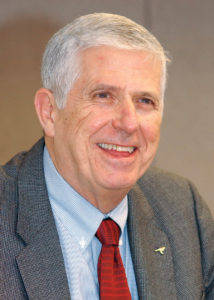
What connects the Berea students who have participated in Moses’ program is the desire to meet new challenges and to support others. Moses said much of the joy he found in his career came from conducting research that other scientists had not done before, research they found interesting and significant. He also said, “What gives me the most pleasure at this stage of my career is contributing to the success of people who have trained in my lab.” Though he recently closed his Vanderbilt laboratory after more than 50 years of cutting-edge research, his legacy will live on in the lives and careers of the many students his work has touched. Clear evidence of this program’s success can be seen in the lives of participants who have already launched careers in medicine, teaching, and research.
Many Pathways to Success
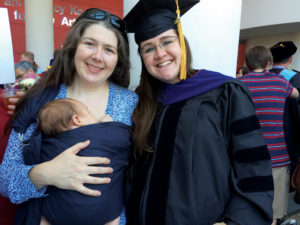
As the first Berean to intern at Moses’ laboratory, Dr. Jacqueline Price Sequoia ’02 truly broke new ground. Not only did she spend the summer working in the lab of one of Berea’s most distinguished alumni, Moses, she lived in the home of another, Dr. Sarah Hamilton Sell ’34, a pioneering bacteriologist whose research led to the development of a vaccine for childhood meningitis. The full story of that first summer was told in the Fall 2001 issue of the Berea College Magazine, which can found at www.berea.edu/magazine/issue-archives/.
Reflecting on her time at Vanderbilt 15 years later, Sequoia remains grateful for the experience and the doors it helped open for her. “Dr. Moses wrote some of my early letters of recommendation, which helped me get other research opportunities and set me up for getting into a top 10 medical school,” she said. Those other research opportunities included time at the Mayo Clinic and the National Institute of Health, before she went on the attend the University of San Diego Medical School. Her interest in clinical research led her to study public health (she has a master’s of public health in epidemiology from San Diego State University) and later she earned a master’s of advanced studies in clinical research from UC San Diego. After an internship in obstetrics, Sequoia completed her residency to become board certified in family medicine.
Today, Sequoia balances her time between working as a hospitalist (she plans to open her own private practice in the future), writing clinical articles (her co-authored paper on probiotics will be published in the American Family Physician journal later this year) and raising her family with her husband, Kevin Williams Sequoia ’02, on their farm in Westminster, South Carolina.

For Dr. Chris Barton ’03, assistant professor of biology at Belmont University in Nashville, Tennessee, the chance to do research was a transformative aspect of his Berea experience. “When I started at Berea, I was an athlete, and when I left, I was a student-athlete,” said Barton. He attributes much of this change to the attention he received from professors like Dr. Dawn Anderson. He recalls being an indifferent student until he took a genetics class with Anderson that ignited his interest in science. He said it was “one of the pivotal times in my college tenure” because she took the time to make an investment. Barton said the turning point was a conversation where Anderson said to him, “You can be really good at this. You should explore that. Are you interested in research?”
That simple question started a chain of events, including his internship at Vanderbilt. Barton said, “It was even an honor to even be asked. When I went there for the summer, I worked in a lab run by Jennifer Pietenpol, who, strangely enough, got her Ph.D. in the lab of Hal Moses.” The project he worked on that summer, he said, “changed the trajectory of what I was going to do in science because I was fortunate enough to be on a paper that was accepted for publication.” After graduating from Berea, he returned to Vanderbilt and Pietenpol’s lab, where he completed his doctorate.
During graduate school, Barton had the chance to mentor students from Berea in the summer internship program. He said, “I found it extremely rewarding and humbling to think I had been given the opportunity to gain the knowledge and the ability to teach at that level.” Mentoring helped him realize how much the internship experience meant to his career and personal growth. “I could remember walking into the same lab at Vanderbilt, sitting in the same seat where this student is sitting, and being completely overwhelmed,” said Barton. “I think that was really important for me because it was my way, at least a small way, of giving back to Berea”
Though Dr. Rachel Saunders ’08 knew from an early age that she wanted to be a physician, the chance to have a research internship at Vanderbilt still played a significant role in her career.
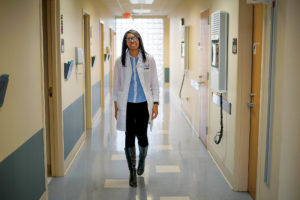
“Early on,” she recalled, “I identified myself as someone who was pre-med, and I felt everyone at Berea took me under their wings and guided me in the right direction. They knew I wanted to go into medicine,” said Saunders, “so I was matched with Dr. Anna Spanioli, a gastrointestinal surgeon. At the time, I was considering a surgical specialty, so it was really nice to not only be able to work in the lab but to also be able to go to the OR [operating room] with him and see some procedures. It was a nice introduction to medicine that let me see it was truly what I wanted to do.”
Saunders completed her medical degree at the University of Kentucky (UK) in 2012 and her residency in June 2016. In July, she began as assistant professor of obstetrics and gynecology at the UK Medical Center. After achieving one of her personal dreams, Saunders began to consider how “giving back” can be part of her next challenge. In the future, she hopes to have the opportunity to allow students from Berea “to come shadow me over the summer.”
Sharing his love of science and mentoring younger Bereans has been part of Aaron Fidler’s life since graduating in 2009. As a doctoral student and lab manager at Vanderbilt, he participates in the Aspirnaut™ program both by overseeing a lab in which interns work and by teaching labs to students ranging from third to eighth grade in rural school districts. Fidler says, “I’ve been heavily involved in the video conferencing aspect. Essentially what we do is use Skype, Google Hangouts, or Zoom to connect with classrooms in Tennessee, Arkansas, Maine, Montana, North Carolina.” Because these districts often lack sufficient funding, Fidler notes, the video labs are often the most significant exposure the students will have to scientific research.
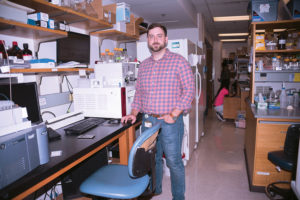
Fidler’s career goals are split between his interest in research and his interest in science communication, a path that might lead to becoming an editor for a scientific journal. After working with students in the public schools for several years, he has seen the need for better science education, and learned he enjoys building bridges between complex scientific research projects and a broader general audience. “If people don’t understand what we’re doing in the laboratory and what our science really means, what is the point?” said Fidler. “There are lots of things that come out of our work that has enormous impact on people’s health and lives, and we want the public to know about it.”
While some of the paths leading to internships at VICC are somewhat predictable, having originated from a student’s interest in genetics or medicine, that certainly wasn’t the case for Tommy Boykin ’13. As a physics major, Boykin is one of the few non-chemistry or non-biology majors to have participated in the program. Still, it had a major impact on the direction of his career. He recalls the first few weeks on campus being very challenging.
“I had no idea what people were talking about because for three years I’d been learning physics. I knew how to talk about how equations are related to systems, but not about how chemically stable or how biologically efficient the systems were. At first, I really was a fish out of water.”
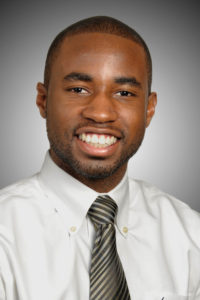 That changed, however, when his advisor, Dr. Charles Sanders, had him begin a project that involved nuclear magnetic resonance (NMR) imaging. “I remembered that Dr. Amer Lahamer, my mentor and physics teacher at Berea, had mentioned NMR, and so I asked my advisor if there was overlap with physics. He said there’s a new up-and-coming field called biological physics.”
That changed, however, when his advisor, Dr. Charles Sanders, had him begin a project that involved nuclear magnetic resonance (NMR) imaging. “I remembered that Dr. Amer Lahamer, my mentor and physics teacher at Berea, had mentioned NMR, and so I asked my advisor if there was overlap with physics. He said there’s a new up-and-coming field called biological physics.”
Boykin, who is starting the physics Ph.D. program at the University of Central Florida this year, continues to do research in this area. “My research applies to optical and electrical sensing,” which may have applications ranging from camouflage to treating patients with epilepsy, Boykin says.
The Future of Research at Berea
The Vanderbilt program has helped many students strengthen their research skills and afforded them an opportunity to explore careers in biomedical research that would otherwise not have been possible at Berea. While Berea’s current students will have access to better, more modern lab spaces in the Margaret A. Cargill Natural Sciences and Health Building when it opens for classes in the fall of 2018, the summer internships through Vanderbilt and other institutions will continue to provide Berea’s students with a competitive edge.
Dr. Matthew Saderholm, chair of Division 1, which includes the biology, chemistry, mathematics, nursing, and physics programs, believes adding better on-campus research facilities to the existing program will open up research as a career for more students: “Our training is often the first step toward a research arc for many students because they come from schools with poor access to modern science and limited exposure to STEM careers.” As a result of the new building, “many more students will have their eyes opened to new possibilities here through undergraduate research, which will allow them to build their resumes to a point that they are able to compete for positions at more prestigious institutions.”
In Fidler’s view, the new building will provide an essential supplement to the internships: “Ten weeks is just long enough to get your feet wet, to make you interested or make you realize you don’t like research.” He believes that having improved laboratory facilities will be a significant boon to undergraduates at Berea because they will allow students to continue research throughout the school year.
Boykin agreed by saying, “I believe a new science building will open up not only research opportunities, but open up students’ minds about what opportunities there are, as far as experiments and new ways of thinking.”


